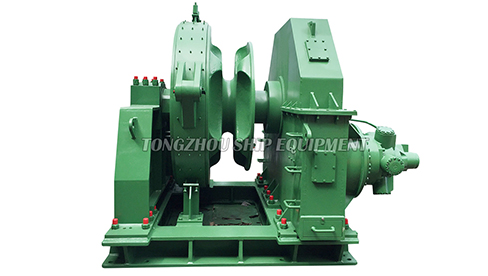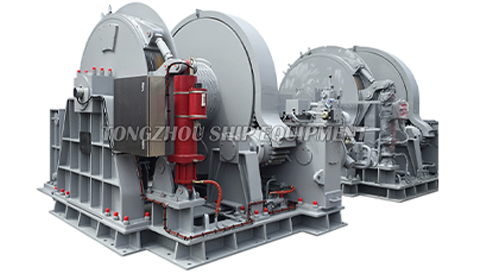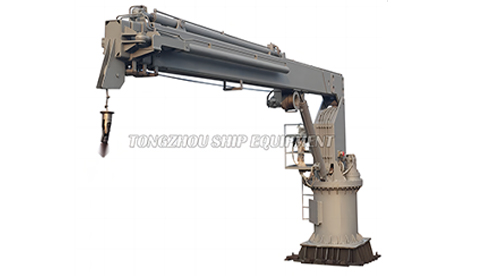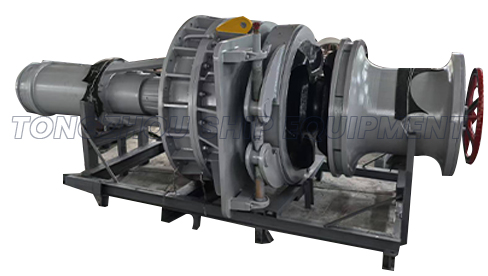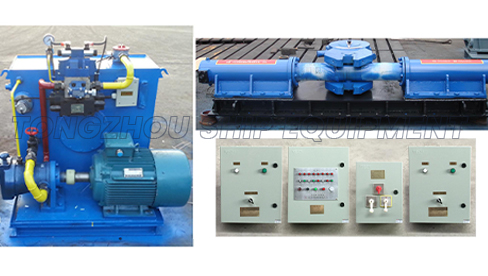What Safety Features Prevent Accidents on a Marine Hydraulic Anchor Windlass?
 2025.06.29
2025.06.29
 Industry News
Industry News
The reliable deployment and retrieval of an anchor is fundamental to vessel safety. A failure in this critical system can lead to catastrophic consequences, including dragging anchor, grounding, collisions, or severe injury to crew. Hydraulic anchor windlasses, known for their robustness and high-power capabilities, incorporate several sophisticated safety features designed to prevent accidents and ensure controlled, reliable operation. Understanding these features is crucial for safe maritime operations.
1. Hydraulic System Overload Protection: The Primary Safeguard
- Pressure Relief Valves: This is arguably the most vital safety component. Integrated directly into the hydraulic circuit, these valves automatically open if system pressure exceeds a pre-set safe limit (often dictated by windlass design and class rules). This prevents catastrophic failure of hydraulic lines, hoses, pumps, or the windlass motor itself due to overloads caused by:
- Excessive Chain Tension: Snagging on seabed obstructions or sudden vessel movements generating high loads.
- Jamming: Debris caught in the gypsy or wildcat.
- Hydraulic System Malfunctions: Such as pump runaway.
- Operator Error: Attempting to haul beyond the windlass's rated capacity. Relief valves protect personnel nearby from potential hydraulic line bursts and prevent expensive damage to the entire system.
2. Fail-Safe Braking Systems: Preventing Uncontrolled Running
- Hydraulic Motor Brakes: These brakes are typically spring-applied and hydraulically released. When hydraulic pressure is present (during normal operation), the brake is disengaged. Crucially, if hydraulic pressure drops (due to pump failure, engine shutdown, or intentional system stop) or if control levers are placed in neutral, the springs immediately engage the brake. This locks the motor shaft, preventing the anchor chain from running out uncontrollably under its own weight or vessel motion. This is essential for preventing:
- Accidental anchor deployment.
- Crew injury from runaway chain.
- Damage to the windlass or deck from a violently running chain.
3. Controlled Speed and Direction: Operator Precision
- Proportional Hydraulic Controls: Modern systems often feature lever-operated valves offering proportional control. This allows the operator to finely modulate the speed of chain retrieval or payout. Precise control is vital for:
- Smooth Operation: Preventing sudden jerks that can shock-load the system or cause chain to jump the gypsy/wildcat.
- Safe Handling Near Bitter End: Allowing careful stopping before the chain end is reached.
- Managing Slack: Essential during anchoring operations in varying conditions to maintain control.
- Emergency Stops: Enabling rapid cessation of movement if a hazard is observed.
4. Robust Mechanical Design and Construction: Built to Withstand
- High-Grade Materials: Windlasses are constructed from durable materials like forged steel or high-tensile castings to handle immense stresses and harsh marine environments (saltwater, UV).
- Precision Engineering: Gypsies (for chain) and wildcats (for chain/rope) are precisely machined to match the specific chain size and grade, minimizing the risk of chain jumping or slipping ("surging").
- Secure Mounting: Engineered foundations and bolting ensure the windlass remains firmly attached to the deck, even under high loads.
5. Operational Awareness and Maintenance: The Human Factor While not a "feature" of the windlass itself, safe operation is paramount:
- Clear Markings: Chain length markers and bitter end markings are essential for the operator to know the chain's status.
- Routine Maintenance: Strict adherence to manufacturer maintenance schedules for hydraulic fluid, filters, brake inspection, and mechanical components is critical to ensure all safety systems function as designed. Checking for wear on brake linings, gypsies, and seals is vital.
- Operator Training: Crew must be thoroughly trained on the specific windlass model, its controls, safety features, and emergency procedures. Understanding the function of the pressure relief valve and brake system is non-negotiable.
The safety of a marine hydraulic anchor windlass is not reliant on a single feature but on a carefully engineered system of interdependent components. Pressure relief valves protect against destructive overloads, fail-safe brakes prevent uncontrolled chain runs, proportional controls enable precise and safe handling, and robust construction provides the necessary strength. Crucially, these engineered safeguards must be complemented by diligent maintenance and competent operation. Understanding and respecting these integrated safety features is fundamental to preventing accidents and ensuring the anchor windlass performs its vital role reliably, safeguarding the vessel, its crew, and the marine environment.



 English
English  عربى
عربى  中文简体
中文简体 
